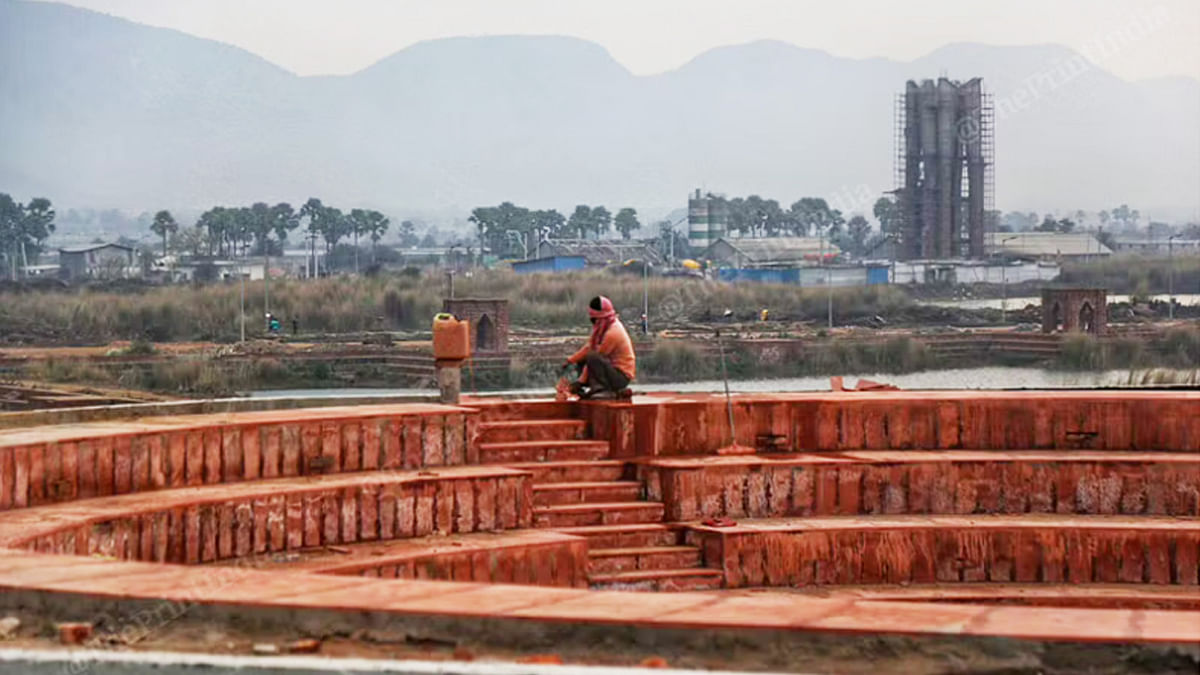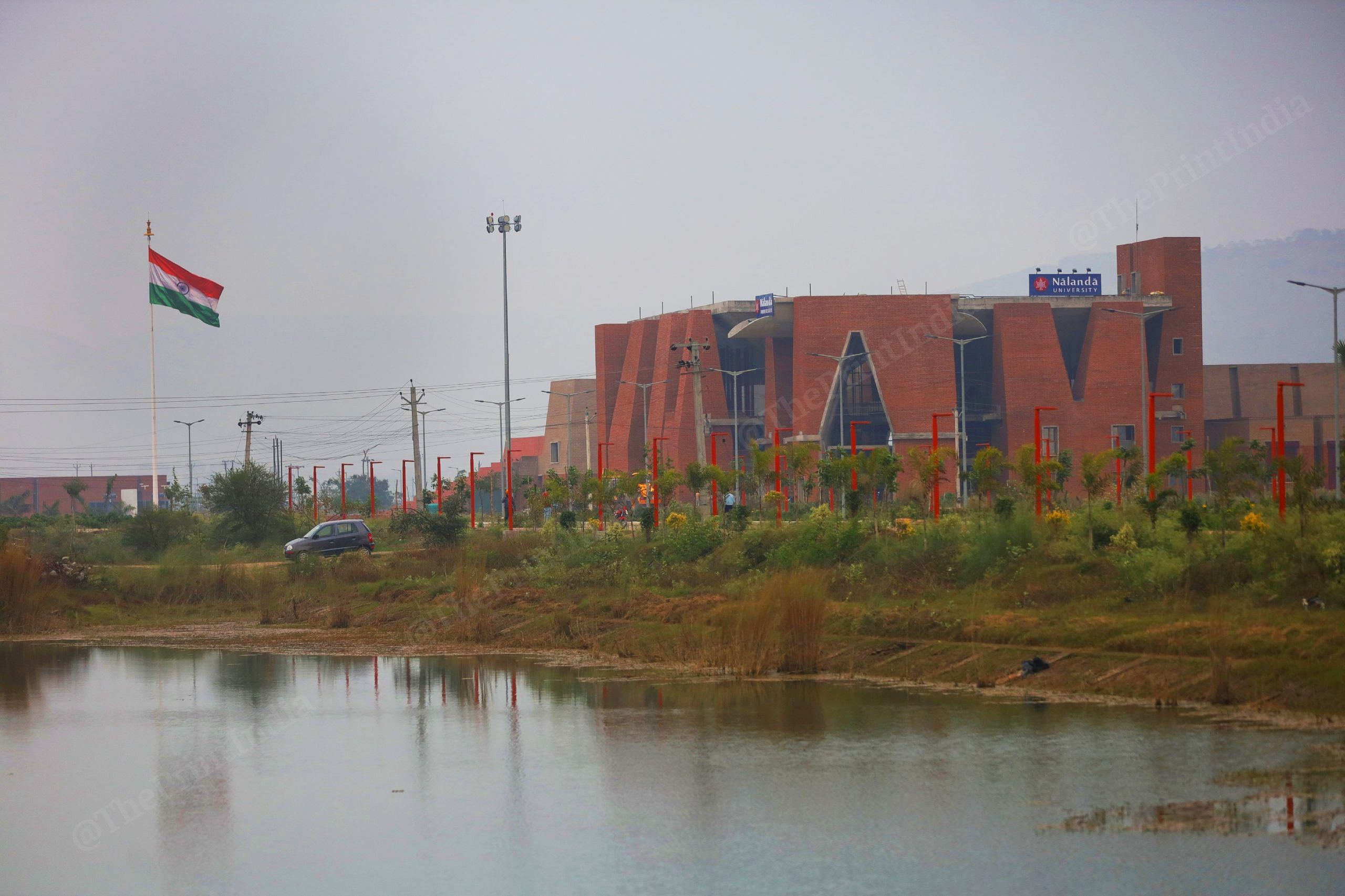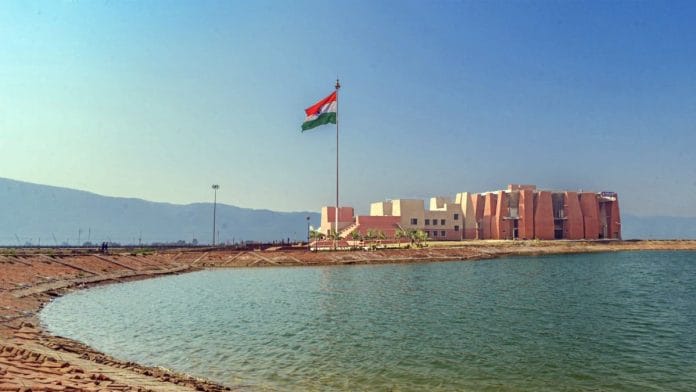New Delhi: The new campus of Nalanda University in Bihar’s Rajgir was inaugurated by Prime Minister Narendra Modi Wednesday. Hailing the resilience of the institution against the various challenges faced by it, he said that Nalanda represents the essence of India’s identity, honour, values and principles.
“I am happy that I got the opportunity to visit Nalanda within 10 days of being sworn in as PM for the third time… Nalanda is not just a name, it is an identity, an honour. Nalanda is a value and mantra,” Modi said.
External Affairs Minister S. Jaishankar, Bihar Governor Rajendra Vishwanath Arlekar, Chief Minister Nitish Kumar and Nalanda University Chancellor Arvind Panagariya attended the inauguration ceremony.
Envoys from a total of 17 countries — Australia, Bangladesh, Bhutan, Brunei, Darussalam, Cambodia, China, Indonesia, Laos, Mauritius, Myanmar, New Zealand, Portugal, Singapore, South Korea, Sri Lanka and Vietnam — were also present.
ThePrint explains the historical significance of Nalanda University and its revival.
The origins
Known as the world’s first residential university, Nalanda was established in Rajagriha (now Rajgir) in Bihar in the fifth century by the Gupta dynasty, attracting scholars from all over the world. The details of the university can also be found in the writings of famous Chinese traveller Hiuen Tsang, according to which, there were 10,000 students and 2,000 teachers on its premises at that time.
It is also speculated that Aryabhatta, famed mathematician and astronomer, could have been one of the educators at the university during the sixth century.
Back then, the comprehensive curriculum at the university included a broad spectrum of subjects, encompassing sacred and secular knowledge from both local and foreign sources.
Students devoted themselves to studying science, astronomy, medicine and logic, besides metaphysics, philosophy, samkhya, yoga-shastra, the vedas, and Buddhist scriptures. They also engaged with foreign philosophies.
Even the Dalai Lama once said, “The source of all the (Buddhist) knowledge we have is Nalanda.”
At the time, the university had a nine-storey library, known as “Dharma Gunj”, which is said to have housed “roughly nine million books”. They were reportedly all burnt down by Bakhtiyar Khilji, a general of Qutubuddin Aibak, according to Tabaqat-i-Nasiri, a document by 13th century Persian historian, Minhaj-i Siraj Juzjani.
Also Read: Doctors welcome MP’s decision to scrap seat-leaving bond for MBBS students. What the policy entails
The revival
Referring to the fire, PM Modi said Wednesday, “Fire can burn books, but it can’t destroy knowledge.”
In an attempt to revive its legacy, former president late A.P.J. Abdul Kalam had proposed the idea of re-establishing Nalanda University in 2006, which was supported by the then Bihar government, and endorsed in 2007 by East Asia Summit member nations, including Australia, China, Singapore, and Japan, among others.

After a lot of back and forth, the Nalanda University Bill was passed in 2010, and the first batch of students was enrolled in September 2014, who attended classes in a makeshift campus.
N.K. Singh, Chairman of the 15th Finance Commission, who was also a member of the original mentor group of the Nalanda University recalled participating in the debate on the Nalanda University bill as a member of the Rajya Sabha.
Singh told ThePrint over a phone call, “It has taken a long time, but nothing can give me greater pleasure. This is indeed an auspicious moment, to recreate and rejuvenate a very, very iconic part of Indian legacy and history, to have the Nalanda University proximate to the site of the old Nalanda University.”
In 2016, former president Pranab Mukherjee laid the foundation stone for the permanent campus in Pilkhi village in Rajgir, after which the construction had started.
Nobel Laureate Amartya Sen was also involved with the university for nine years, serving as the chancellor and as a member of the Nalanda Mentor Group responsible for its establishment. His tenure, however, was marred by controversy.
In 2015, Sen, in a letter withdrawing his candidature for the second term as chancellor, had mentioned that the Narendra Modi-led government did not want him to continue, an allegation which was denied by the ministry of external affairs.
Singh also pointed out a lesser known fact about the university — the old university had adopted 200 villages around Nalanda, whose entire system depended on Nalanda. He called it a “living example of give and take”.
“You secure your livelihood from the university, which is functioning, and give the rural people, apart from education, a stake in the working of the university. So this is a very novel experiment, which can also rejuvenate the development factors of how university research centres can also support the rural economy,” he added.
The new campus
Spanning 100 acres, the new campus blends eco-friendly design with ancient Vastu principles, aiming for a net-zero carbon footprint.
The key features include two blocks housing 40 classrooms for nearly 1,900 students, and two auditoriums with a seating capacity of over 300. Apart from these, there are hostels that can accommodate up to 550 students, along with 197 housing units for the faculty.
Moreover, the campus will have facilities like a sports complex, medical centre, commercial centre and faculty club. A planned library is also set to be completed by September, with space for 3,00,000 books and 3,000 users.

“Students have started coming here from around the world. Students from more than 20 countries are studying here in Nalanda,” said Modi, referring to the concept of “Vasudhaiva Kutumbakam” (one Earth, one family).
The university now has six schools, offering programmes in Buddhist studies, historical studies, ecology, sustainable development, various languages, literature and international relations. It also comprises four specialised centres, focusing on Bay of Bengal Studies, Indo-Persian Studies, Conflict Resolution and a Common Archival Resource Centre.
(Edited by Mannat Chugh)






